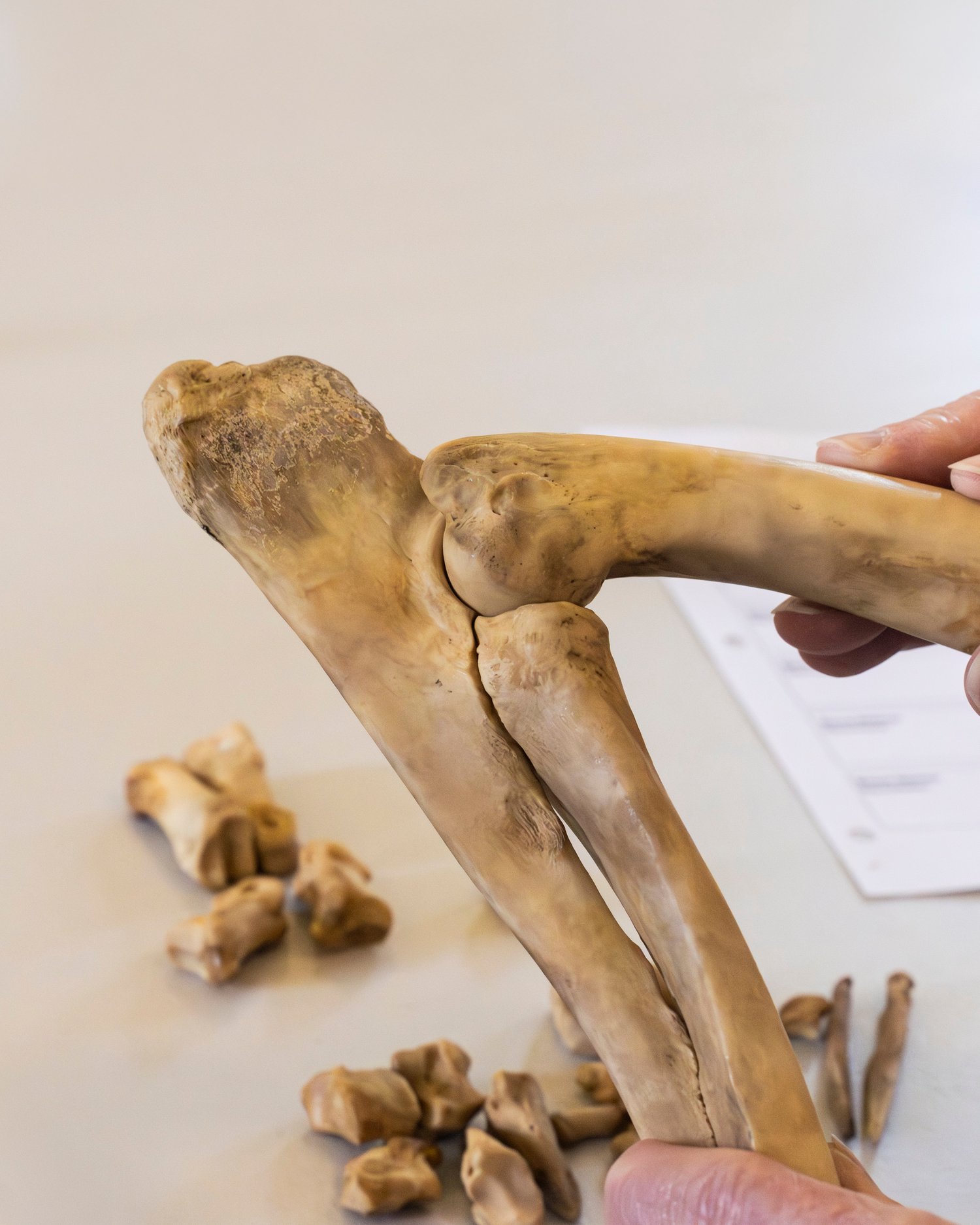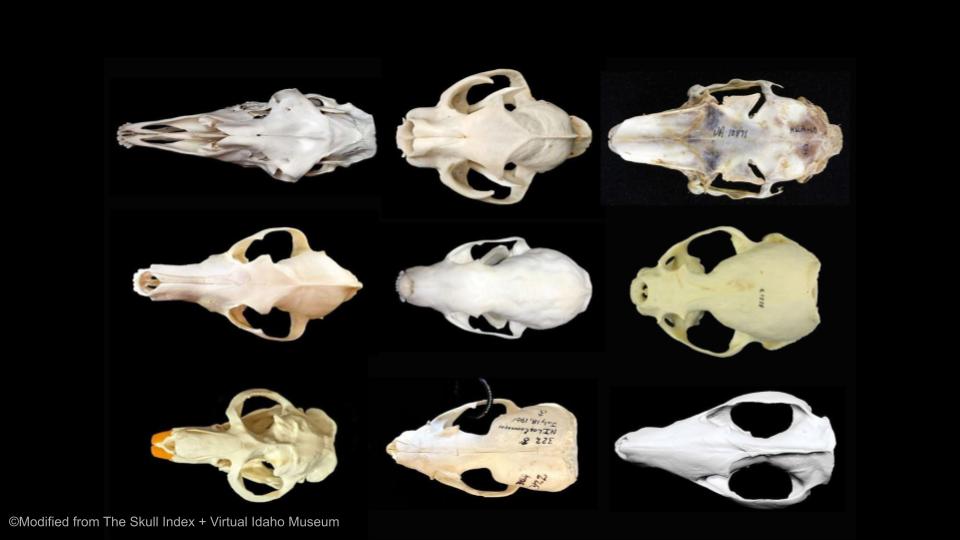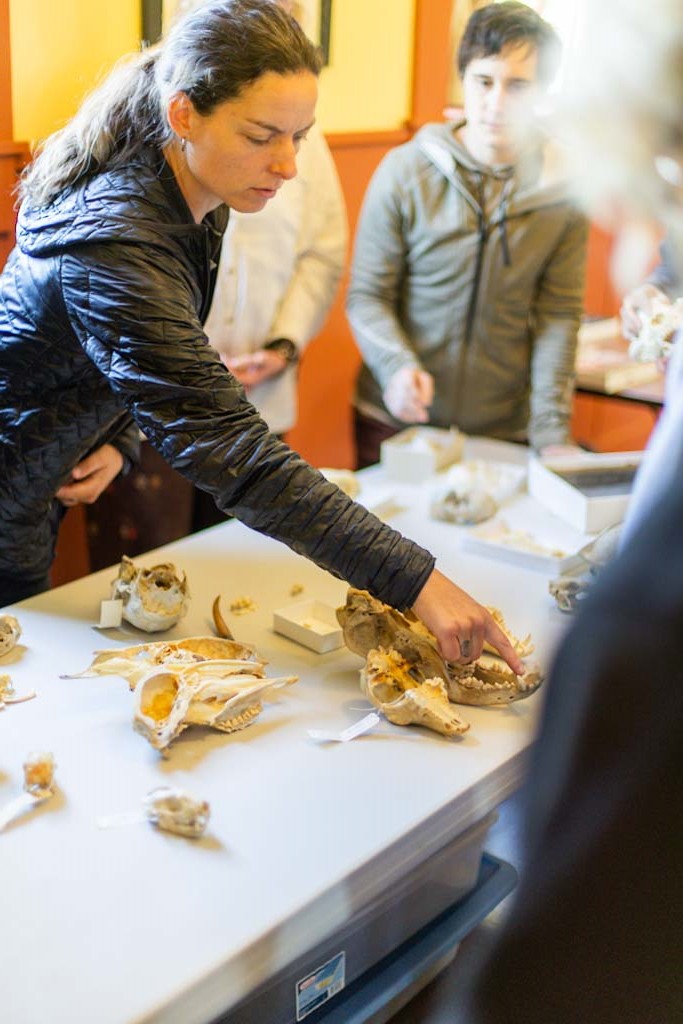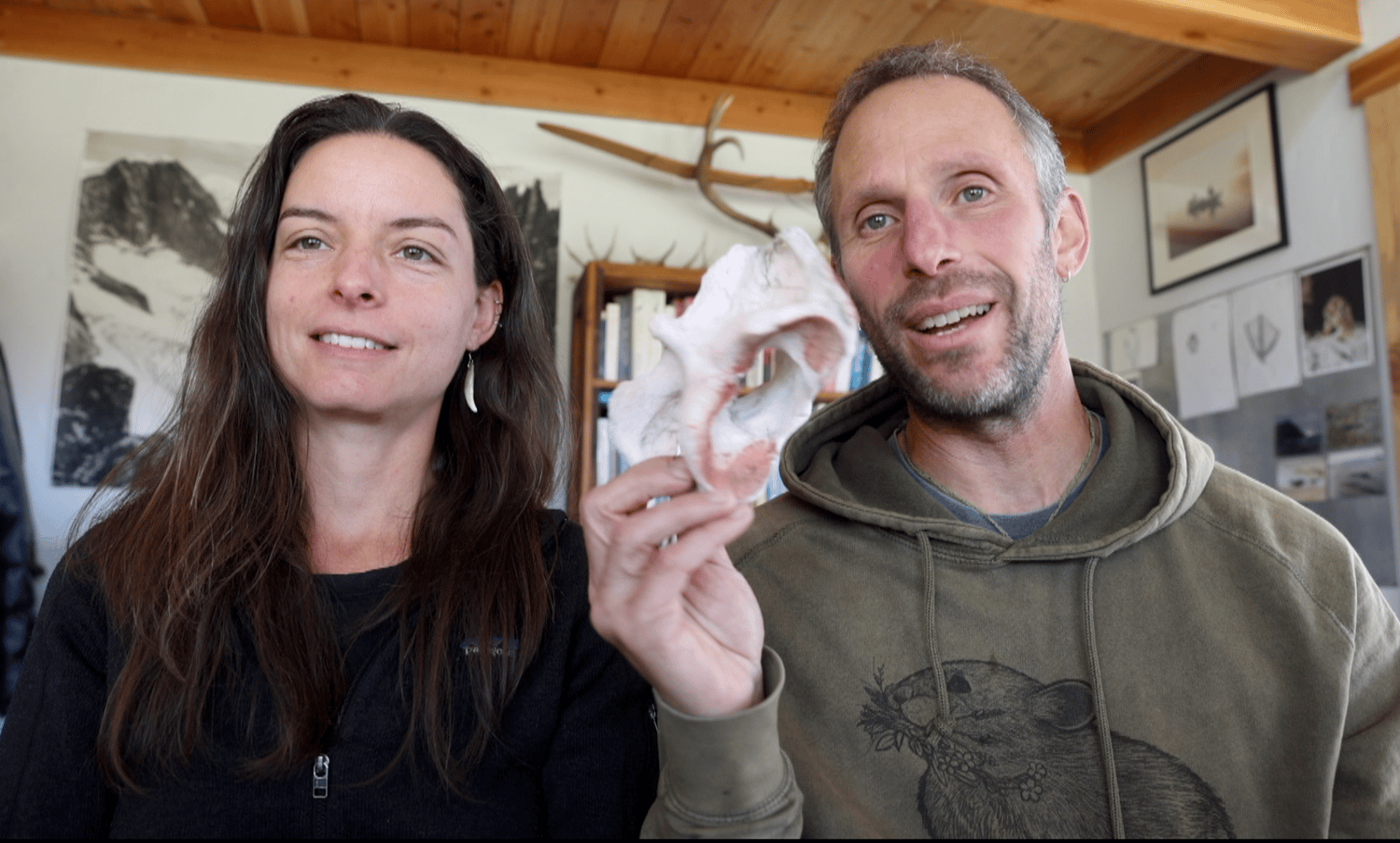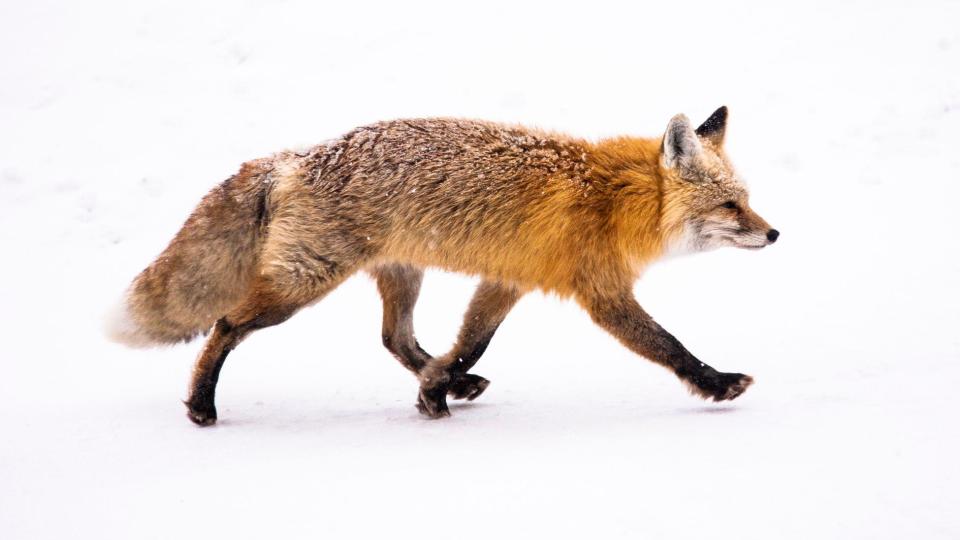Mammal Bones: Applications for Wildlife Observation and Tracking
An On-Demand Online Training Series

An On-Demand Online Training Series
Take a guided tour of the mammal skeleton and lay the foundation for being able to name a bone, know where it is found in the body and its function!
This class is ideal for anyone interested in learning about animal behaviour, biology, wildlife tracking and the natural history of mammals.
There are three price points available for this course. We are offering a sliding scale in order to create multiple access points for people with varied economic backgrounds. Please read the descriptions fully and the select the cost that best reflects your financial situation. If none of these plans work for you please contact us, we offer a limited number of scholarships.
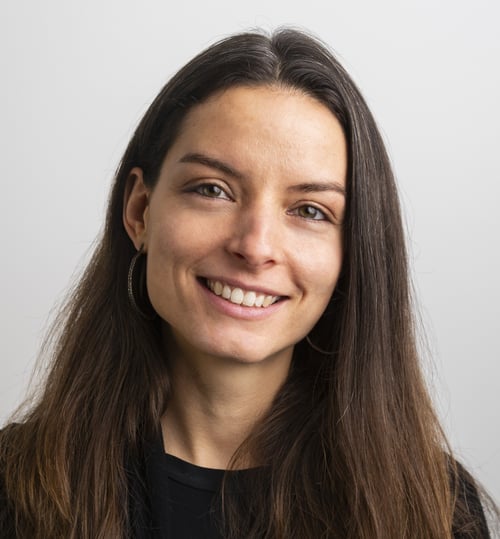
Nyn Tomkins is a naturalist, anatomy enthusiast, chiropractor, bodyworker and wildlife tracker. She is deeply interested in the stories our bodies, in particular our bones, can tell about how we live and relate to the world. She is passionate about teaching anatomy and physiology as a way to help other people relate to and connect with our other than human kin.
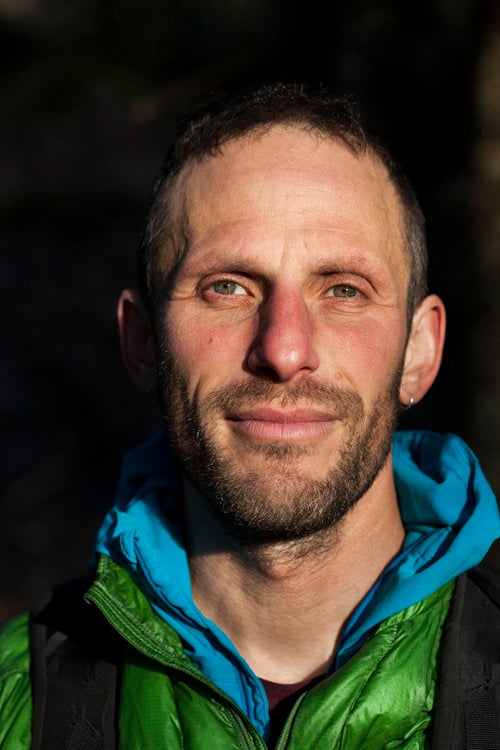
David Moskowitz is a certified Senior Tracker and a Track and Sign and Trailing Evaluator here in North America. He works in the fields of photography, wildlife biology and education. He is the photographer and author of three books: Caribou Rainforest, Wildlife of the Pacific Northwest and Wolves in the Land of Salmon, co-author and photographer of Peterson’s Field Guide to North American Bird Nests and photographer of Big River: Resilience and Renewal in the Columbia Basin.
Learn how to name each bone in the body and where it is located. Apply this information to field skills like animal observation and wildlife tracking. Understand fundamental concepts in anatomy.
Four videos between 60 and 100 minutes long, plus multiple anatomy worksheets to aid your learning
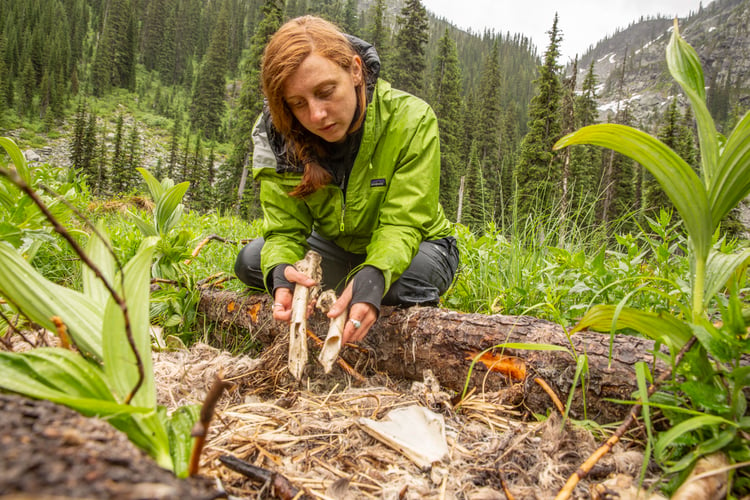
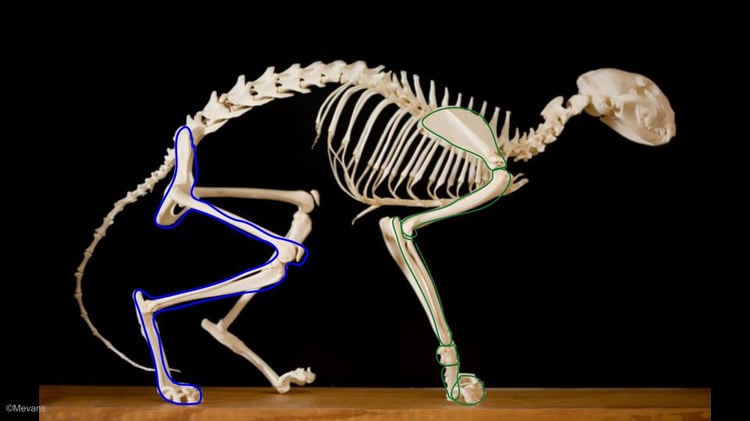
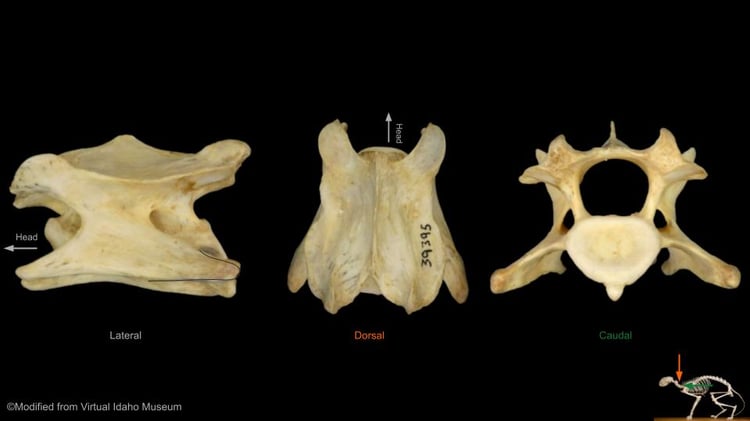
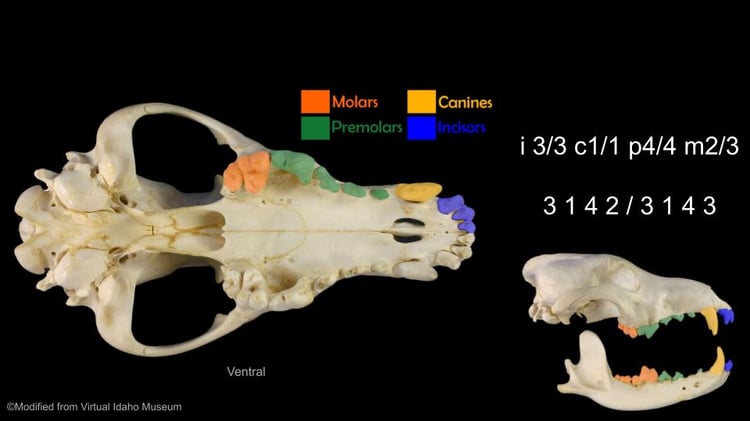
Nyn's curiosity, enthusiasm, and long-studied interest in bones and the lives of those who made them shone through in class. Nyn teaches using both plain language and technical scientific language, covering basics and niche advanced topics, which made this topic accessible to people with a wide range of experience with bones, anatomy, wildlife tracking, and learning styles. The mix of verbal, written, pictorial, and hands-on learning really helped me absorb what Nyn was sharing. What a treat to learn so intimately about the bones of our mammal kin, and how those structures support the diverse ways they move, eat, and interact with the world.
Nyn's classes are nothing short of fascinating. The intricate and sometimes bizarre adaptations of animal skeletons come to life through her engaging teaching style. Nyn helps us unpack complex anatomical concepts by drawing insightful comparisons to the human skeleton. Her passion for bones and her depth of knowledge shine through in every lesson. Whether you're a curious learner or someone who works with animals or physical specimens, this class offers a rich and rewarding experience.
Learning about bones with Nyn was such a great experience! She has a way of breaking down the different structures of bones in animal bodies so they’re easy to understand, which really helped me grasp both the identification and the function of each part. As a teacher, Nyn is approachable and supportive, so I always felt comfortable asking questions. Overall, I got so much out of this class and feel that it has helped me to understand animal morphology better, as well as be a better wildlife tracker. I’m genuinely excited to sign up for more courses with her in the future!
Dr. Tomkins makes learning about bones fun, cool, and hilarious. I left feeling very inspired to learn more and more.
Dave is an adventurer, with a heart connected to all things wild, so when he is presenting he takes you on a kind of thoughtful journey, leaving your spirit brightened by the beauty in his photographs, joyful from the comedy in his stories, and satiated with his insights in natural history. I’m always impressed with how he manages to address some of the more academic aspects of his observations, while also graciously connecting with his audience and participants – as a presenter, he’s like a friendly and wise ambassador for the wildlife, the places, and the conservationists he works with every day
David transports you to the wilderness through his photography and his compelling, entertaining storytelling. He’s the best kind of speaker: passionate, concise, intelligent and generous with anecdotes and details. All of this really makes his presentations come alive.
There are three price points available for this course. We are offering a sliding scale in order to create multiple access points for people with varied economic backgrounds. Please read the descriptions fully and the select the cost that best reflects your financial situation. If none of these plans work for you please contact us, we offer a limited number of scholarships.
This course is for anyone interested in learning about mammal bones. It's designed to be accessible to folks with no previous knowledge of anatomy or biology. And it is comprehensive enough to be of value to folks with previous expertise in these fields as well.
When you purchase this class you get immediate access to four modules. Each module contains a video lecture that is 60-100 minutes long with high quality visual media. In addition, each module includes a number of worksheets to help your learning.
This is an asynchronous online class, meaning you can watch the video lectures and download additional learning material anytime at your own pace.
Once you purchase the course you'll have access to all the content forever.
Yes, we have put a lot of effort into creating a sliding scale to accommodate people with various financial resources. There are three price points available for you to choose from. If none of these prices work for you please contact us using the contact form on this page. We offer some scholarships.
Yes! The content for this course focuses on North American land-based mammals, but the bigger picture concepts we teach can be applied to all mammals. There will still be plenty of content here for you to deepen your understanding and appreciation of the mammals you live near.
No, this is a foundational class on the skeletal anatomy of mammals. There are no prerequisites to take it. However, this class will be a requirement to enroll in the advanced class on comparative anatomy and functional morphology; being released in 2026.
Yes, both Nyn and David offer custom workshops and courses. Please contact us with a brief outline of what you're interested in to begin collaborating.
Please use the contact form below to reach Nyn and David.
This is the only online class we're offering at the moment. However, in 2026 we'll be releasing the second part of this course on mammal bones. This advanced course will take the concepts we learn in the foundations class and apply it to compare bones between species and tease out insights about what the shape and special features of a bone can tell us about an animal's life and preferences. We'll send an email out to all the people who purchase the foundations class to notify them when it's available. We hope you'll join us!
We'd love to hear from you! Please contact us using the form below for any questions or comments.


